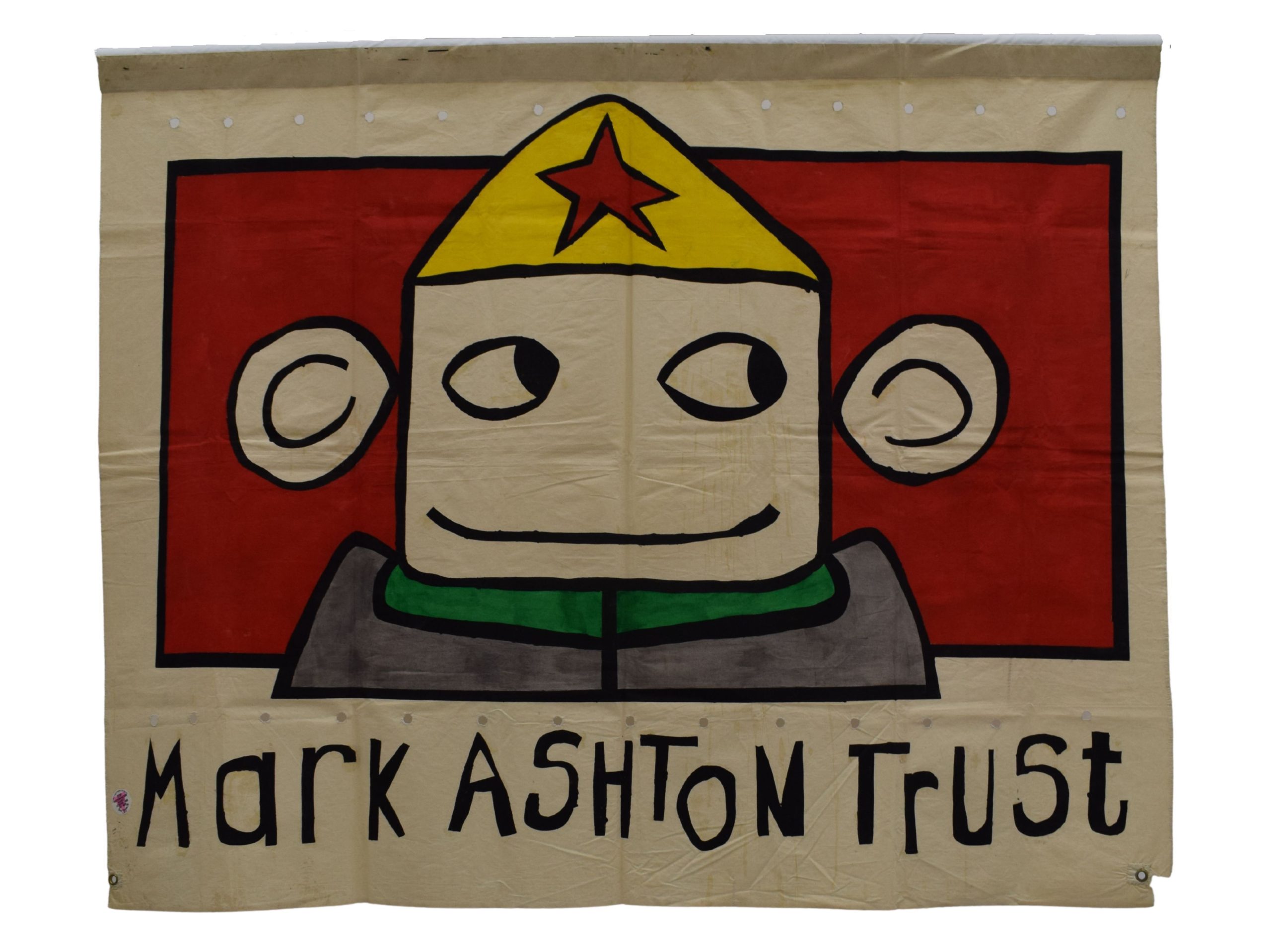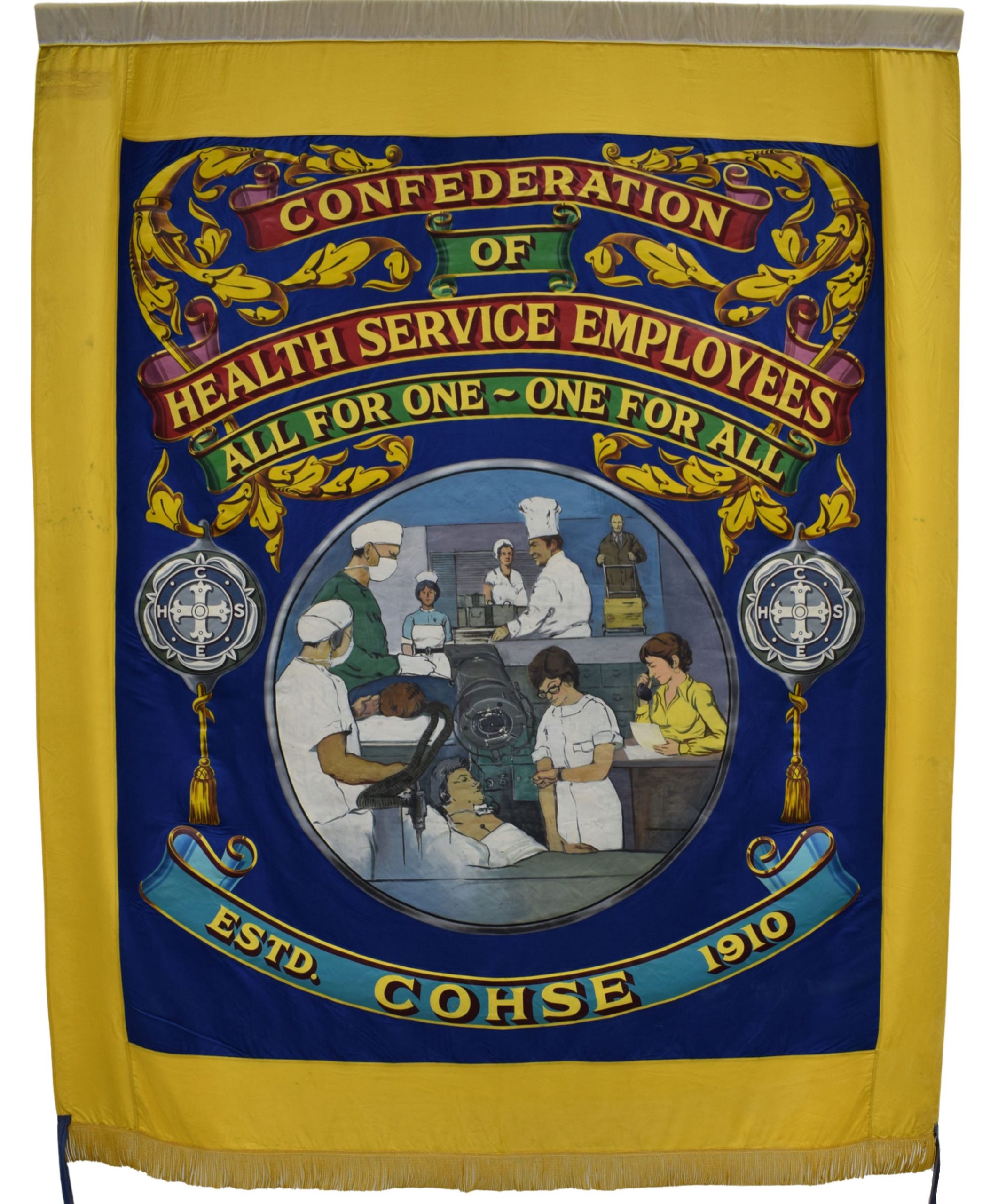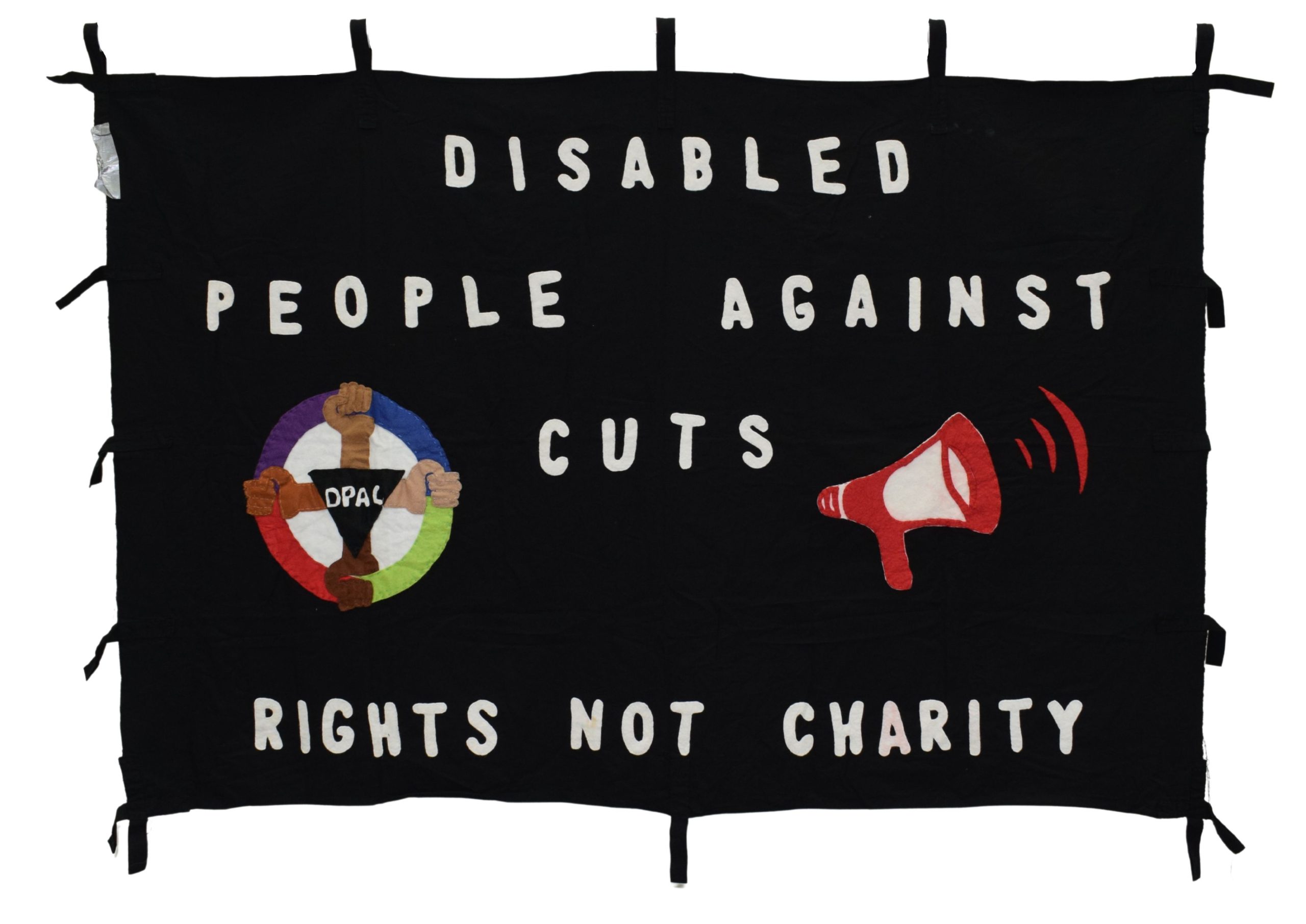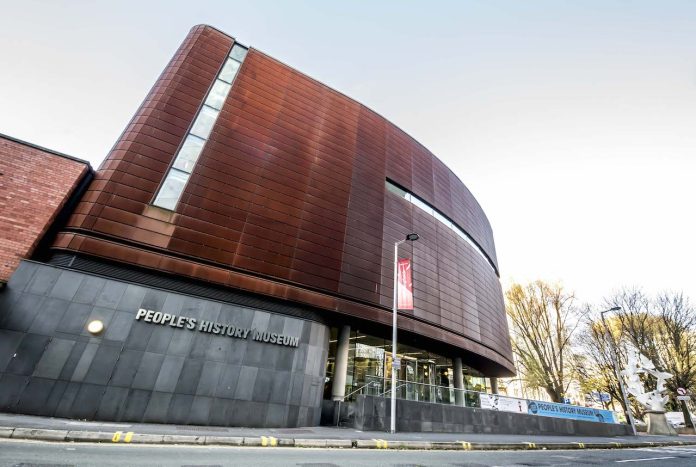A new Banner Exhibition which opens on Saturday 21 January at People’s History Museum (PHM) will be a compelling reminder of the power of collective action. Behind each of the 25 banners, whether over 150 years old or only recently created, there is a show of solidarity. The banners all carry messages calling for change and have been created by people seeking a fairer society.
Recent times have seen more young people joining in the march for change, something which has been particularly evident in the demand for climate action. The ‘Fridays for Future’ strikes that swept the world were a youth-movement that began in August 2018 when 15 year old Greta Thunberg began a school strike for the climate. The Save Me banner was created by 7 year old Annabelle who took part in the Climate Strike in Preston on 20 September 2019. It is joined by the Which Tomorrow? banner from 1996 which tells of the need to take care of the world for future generations.

Mark Ashton (1960-1987) was in his early 20s when he established Lesbians and Gays Support the Miners with Mike Jackson. The story of solidarity between communities that developed during the Miners’ Strike (1984-1985) has been told in the film Pride. The Mark Ashton Trust banner (1988), which has attended some of the biggest protest and Pride marches of the 1980s and 1990s, will go on display for the first time at the museum, joining significant materials on Mark Ashton, whose legacy as an activist continues to inspire.
The St Albans and District Nottinghamshire Miners’ Strike Support Committee banner (around 1984) is an example of the spirit of community action by a network of local and community based support groups responding with support for the mining communities affected by the strikes in the 1980s.
You can also trace the early beginnings of the trade union movement through banners. The Ascott Martyrs quilt was made 150 years ago by Martha Smith, one of 16 women from the village Ascott-under-Wychwood in Oxfordshire. The women were arrested for trying to prevent two farm labourers from working in place of their husbands, who were on strike for better pay. After a trail, they were convicted and imprisoned with hard labour. Farming communities held large protests resulting in Queen Victoria granting the women a free pardon. The women’s lasting legacy saw picketing made legal in 1874.

The Union and Victory banner was made for the Great London Dock Strike of 1889 when it was demanded that no docker or general labourer should be taken on for less than four hours a day, wages should be increased by one penny per hour, and the maintenance of meal times. The strike was successful and also led to the establishment of the Dock, Wharf, Riverside and General Labourers Union. This banner became a talisman for the workers and would go on to be carried in the Transport Strike of 1912 and the Poplar Rates dispute of 1921.
The imagery and artistry of banners is incredibly important and the exhibition carries a number of examples of different art forms. The Merchant Shipping Bill banner (around 1884) is based on a cartoon by Sir John Tenniel (the first illustrator or cartoonist to ever receive a knighthood) which first appeared in Punch magazine. In contrast, the Central Labour College banner (1912) is in the Art Noveau style, which is celebrated through the needlework of Winifred Horrabin, Winifred Blachford and Rebecca West.

The Pendleton Co-operative Society Broughton Branch banner (around 1920) represents those campaigning for issues that included better benefits and facilities for mothers and children, easier divorce and equal pay. The Confederation of Health Service Employees banner (1978), now merged as part of UNISON, campaigned on pay and conditions for nurses, student nurses and ambulance workers. It cost £2,065 to commission this banner, which would be the equivalent to approximately £20,000 today.
Connecting the 2023 Banner Exhibition to PHM’s current headline exhibition, Nothing About Us Without Us (until 16 October 2023), are two banners created by groups campaigning on behalf of disabled people. The Disabled People Against Cuts banner made its first outing ahead of the Conservative Party Conference in Manchester in 2015 as part of an anti-austerity rally. Hanging alongside it will be the Breakthrough UK 20th anniversary banner (2017), a Manchester based organisation led by disabled people to support other disabled people to work and live independently.

All of the banners forming the exhibition are located throughout the museum’s main galleries where further links to the stories they tell can be found. There will also be other ways to enjoy the exhibition; on Saturday 28 January 2023 (11am – 12noon and 2pm – 3pm) the first of a series of Banner Exhibition tours will commence, and Banner Bingo will be launched for February half term (from 18 February 2023) as a fun way to enjoy the exhibition as a family.
The 2023 Banner Exhibition is one of a number of free activities at the national museum of democracy, to which entry is free, although most visitors donate £10. Opening hours are 10.00am to 5.00pm, every day except Tuesday.
To find out about visiting People’s History Museum, its full exhibitions and events programme visit phm.org.uk, and you can keep up to date with the latest news by signing up to receive PHM’s e-newsletter, or following the museum on Twitter, Facebook, and Instagram.







